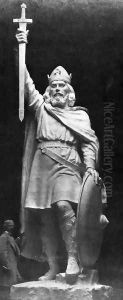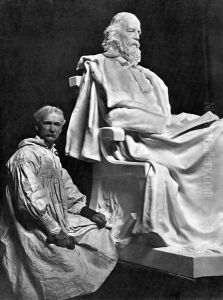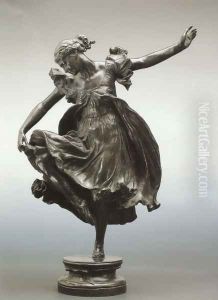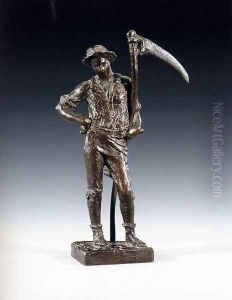William Hamo Thornicroft Paintings
Sir William Hamo Thornycroft was a prominent English sculptor, considered one of the leaders of the New Sculpture movement that sought to break away from the traditional approaches to sculpture by incorporating a greater sense of realism and emotional expression. Born on March 21, 1850, in Thornham, Suffolk, England, to a family with a strong artistic background, his father, Thomas Thornycroft, was a sculptor and engineer, and his mother, Mary Francis, was also a sculptor. This environment nurtured his early interest and talent in sculpture.
Thornycroft's education in art began at the Lambeth School of Art, followed by the Royal Academy Schools, where he was influenced by the teachings of John Henry Foley, a renowned sculptor of the time. His early works were marked by a keen attention to detail and a classical approach to sculpture. However, as his career progressed, Thornycroft became interested in creating sculptures that reflected a more dynamic and realistic portrayal of the human body, as well as exploring themes of heroism and the human condition, which were central to the New Sculpture movement.
Throughout his career, Thornycroft received numerous commissions for public monuments and statues, which are among his most famous works. These include the statue of Oliver Cromwell outside the Houses of Parliament in London and the Boer War Memorial in Winchester. His ability to convey emotion and movement in bronze and marble placed him at the forefront of British sculpture in the late 19th and early 20th centuries.
Thornycroft was also a key figure in the art community of his time, serving as President of the Royal British Society of Sculptors and becoming a Royal Academician. He was knighted in 1917 for his contributions to art. Sir William Hamo Thornycroft passed away on December 18, 1925, leaving behind a legacy that had a lasting impact on the evolution of British sculpture. His works continue to be admired for their technical mastery and emotional depth, embodying the ideals of the New Sculpture movement.



